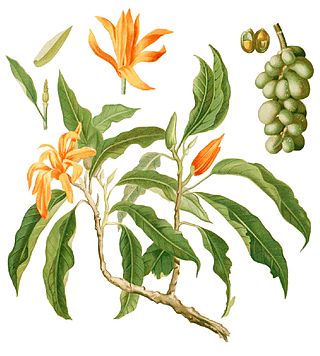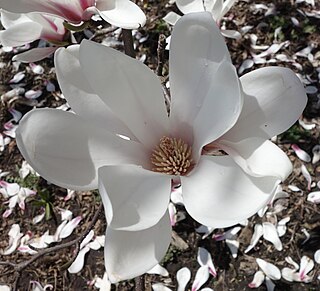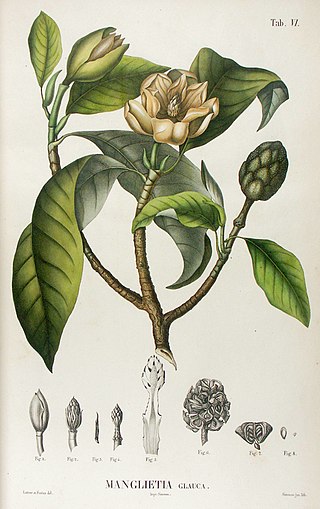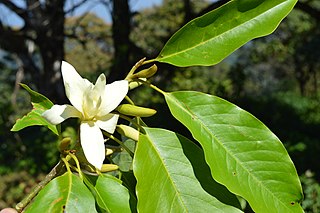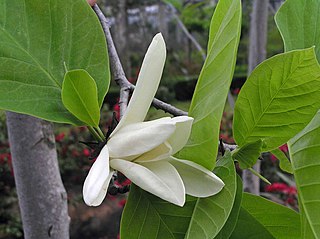Some former Michelia species
Some species formerly placed in Michelia include the following. Synonyms are from Plants of the World Online, as of March 2022 [update] . [5]
- Michelia aeneaDandy, synonym of Magnolia foveolata Merr. ex Dandy
- Michelia × albaDC., synonym of Magnolia × alba. White champaca or white sandalwood, considered to be a hybrid between Magnolia champaca and Magnolia montana .
- Michelia calcicolaC.Y. Wu ex Y.-W. Law & Y.-F. Wu, synonym of Magnolia fulva var. calcicola

- Michelia champacaL., synonym of Magnolia champaca . Champak. Native to India, Java, and the Philippines. A tree or shrub which grows from 3 to 6 meters high and wide. Glossy bright green leaves to 16 cm. Produces fragrant orange, yellow, or creamy white flowers in the spring. The flowers of this plant produce an essential oil that is used in perfume.
- Michelia compressa(Maxim.) Sarg., synonym of Magnolia compressa
- Michelia coriaceaHung T.Chang & B.L.Chen, synonym of Magnolia coriacea
- Michelia doltsopaBuch.-Ham. ex DC., synonym of Magnolia doltsopa . Large shrubs and trees, growing to 30 meters. Native to the eastern Himalayas and Meghalaya subtropical forests. Varies in form from bushy to narrow and upright. Leathery dark-green leaves, 6 to 17 cm in length. Clusters of creamy white flowers in winter. Growing in popularity as a street tree in coastal California.
- Michelia figo(Lour.) Spreng., synonym of Magnolia figo (basionym: Liriodendron figoLour.) Banana shrub. A slow growing shrub or small tree that can grow up to 5 meters high and nearly as wide. Densely covered with small glossy green leaves. Bears clusters of large, white, sometimes purple-streaked, flowers with a potent, sweet banana scent. 'Port Wine' is a cultivar that bears rose to maroon flowers.
- Michelia fulgensDandy, synonym of Magnolia foveolata
- Michelia fuscata(Andrews) Blume ex Wall., synonym Magnolia figo var. figo
- Michelia hedyospermaY.-W. Law, synonym of Magnolia hypolampra
- Michelia hypolampraDandy, synonym of Magnolia hypolampra
- Michelia ingrataChen & Yang, synonym of Magnolia fulva var. fulva
- Michelia laevifoliaY.-W. Law & Y.-F. Wu, synonym of Magnolia laevifolia
- Michelia longistylaY.-W. Law & Y.-F. Wu, synonym of Magnolia foveolata
- Michelia montanaBlume, synonym of Magnolia montana .
- Michelia nilagiricaZenker, synonym of Magnolia nilagirica . Native to southern India.
- Michelia odora(W.Y. Chun) Noot. & Chen, synonym of Magnolia odora
- Michelia punduanaHook.f. & Thomson, synonym of Magnolia punduana . Native to Meghalaya subtropical forests.
- Michelia wilsoniiFinet & Gagnep., synonym of Magnolia ernestii
- Michelia skinnerianaDunn, synonym of Magnolia figo var. skinneriana
- Michelia xanthanthaC.Y. Wu ex Y.-W. Law & Y.-F. Wu, synonym of Magnolia xanthantha
- Michelia yunnanensisFranch. ex Finet & Gapnep., synonym of Magnolia laevifolia




